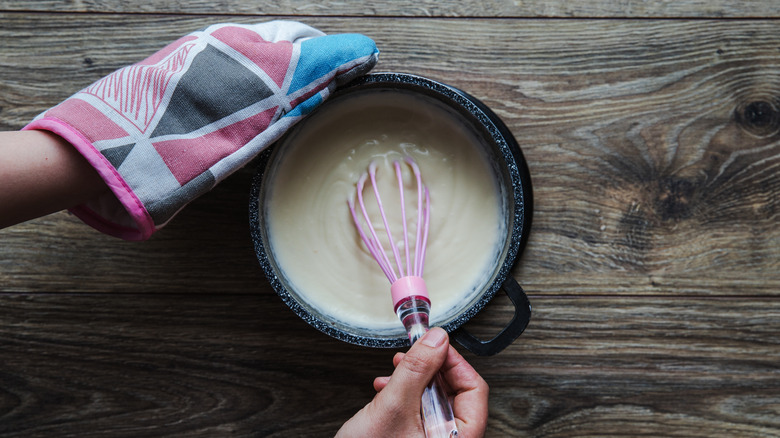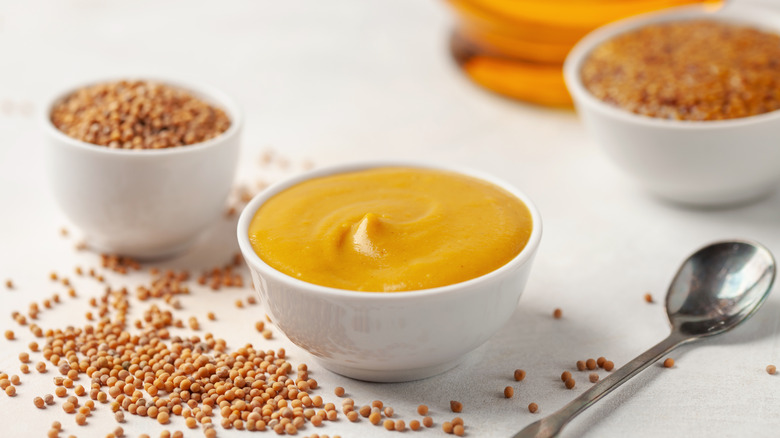Add Mustard To Your Béchamel For A Subtle Kick
Béchamel sauce is French in origin and an essential step towards making everything from your favorite macaroni and cheese for Christmas dinner to creamy soups for those cold winter days, to that pan of lasagna to feed that crowd of friends you invited over to watch "Ted Lasso" or other favorite streaming show. If you are making a soubise to serve with your roasted vegetables, a béchamel sauce is often used and combined with cooked onions and a béchamel sauce is also key to the nantua sauce that's made with crayfish and served up alongside seafood.
It's also relatively easy to make if you have some patience and a hand made for whisking — both being the key to its success. A béchamel sauce is comprised of just a few simple ingredients that transform into a velvety and creamy creation. These include butter and flour that is constantly whisked to form a smooth and thick roux, some milk that is continuously whisked to ensure your sauce is free of lumps, and a little salt and pepper, nutmeg, or bay leaf for flavor and taste. But if you really want to add a mild tang to your next béchamel, mustard is the condiment you should be reaching for.
Sweet, tart, or fiery hot
Mustard is for more than your favorite hot dog or pastrami sandwich on rye. Its acidic nature can be a flavor booster to a béchamel sauce, while adding depth and complexity. Of course, there are a variety of mustards to choose from, which is an opportunity to differentiate your béchamel from everyone else's. Made from ground mustard seeds, vinegar, as well as other herbs and spices, mustards can range from mild to sweet to downright fiery hot — so it may take some experimentation to decide what type of mustard works best depending on what you are planning to use your béchamel sauce for.
However, if you are going to be adventurous with this ingredient, there are a couple of things to consider. The pop of flavor mustard adds can be lovely as long as you aren't too heavy handed when adding it to your sauce. It's best to start with just a little of your favorite version of this condiment. Tasting as you go is the tried and true approach for working with this condiment to ensure it doesn't overpower a sauce that is already rich to begin with.

